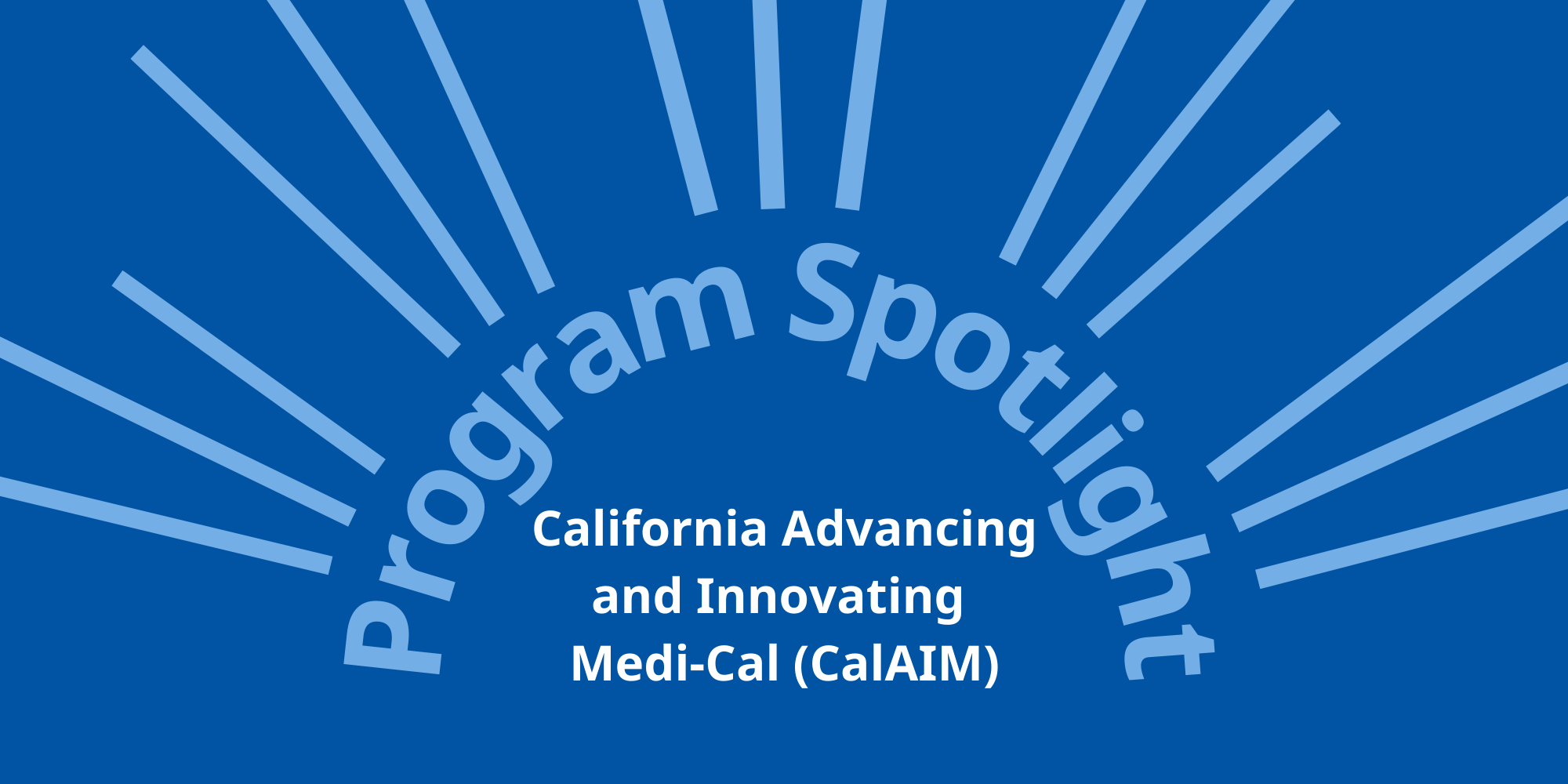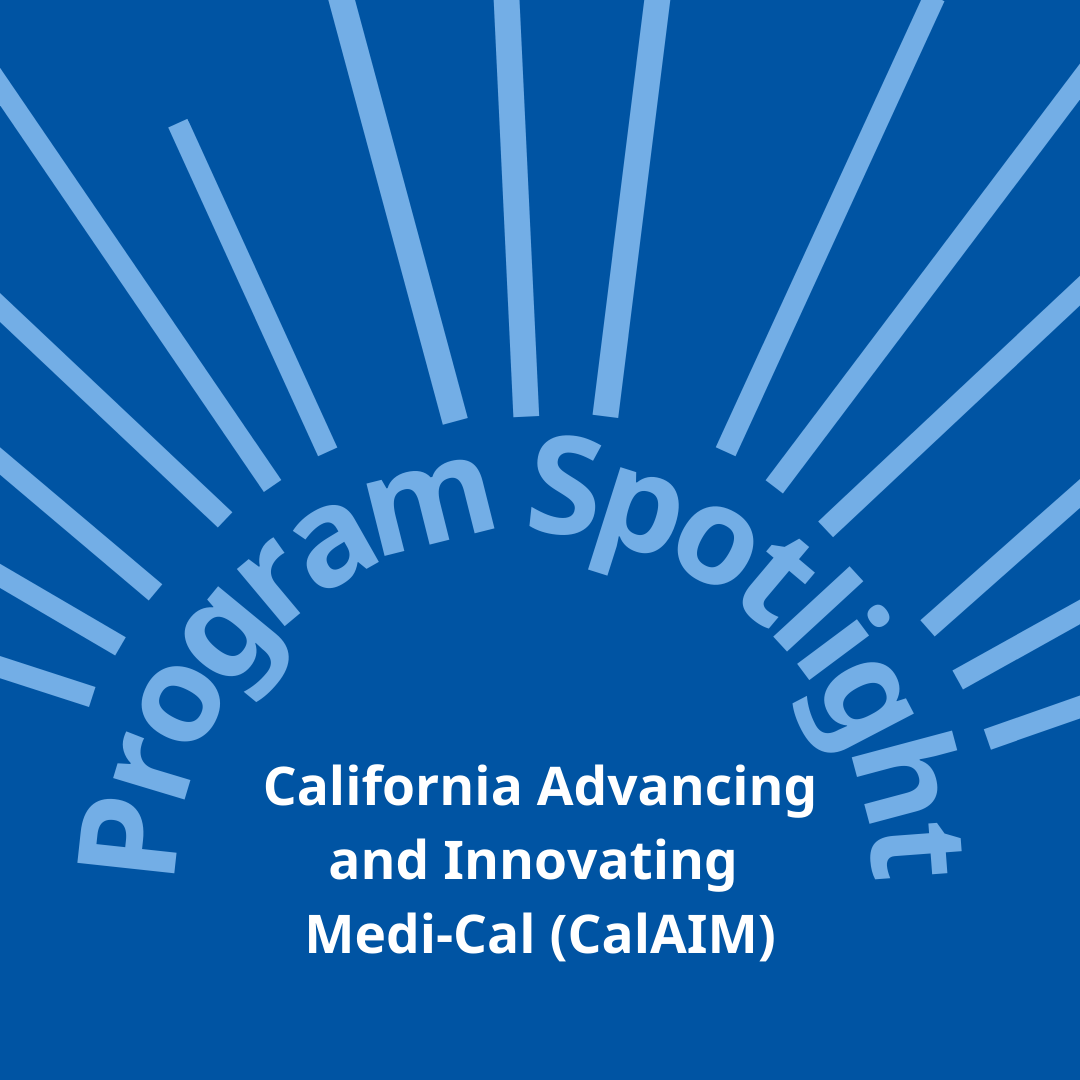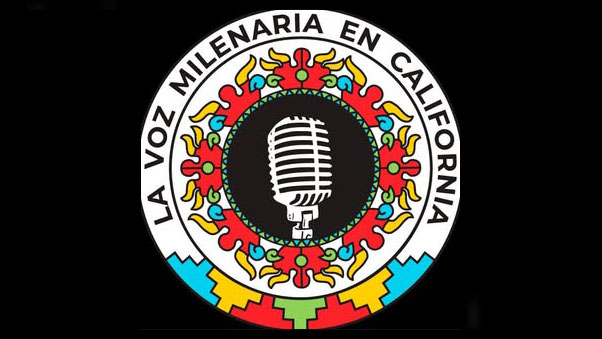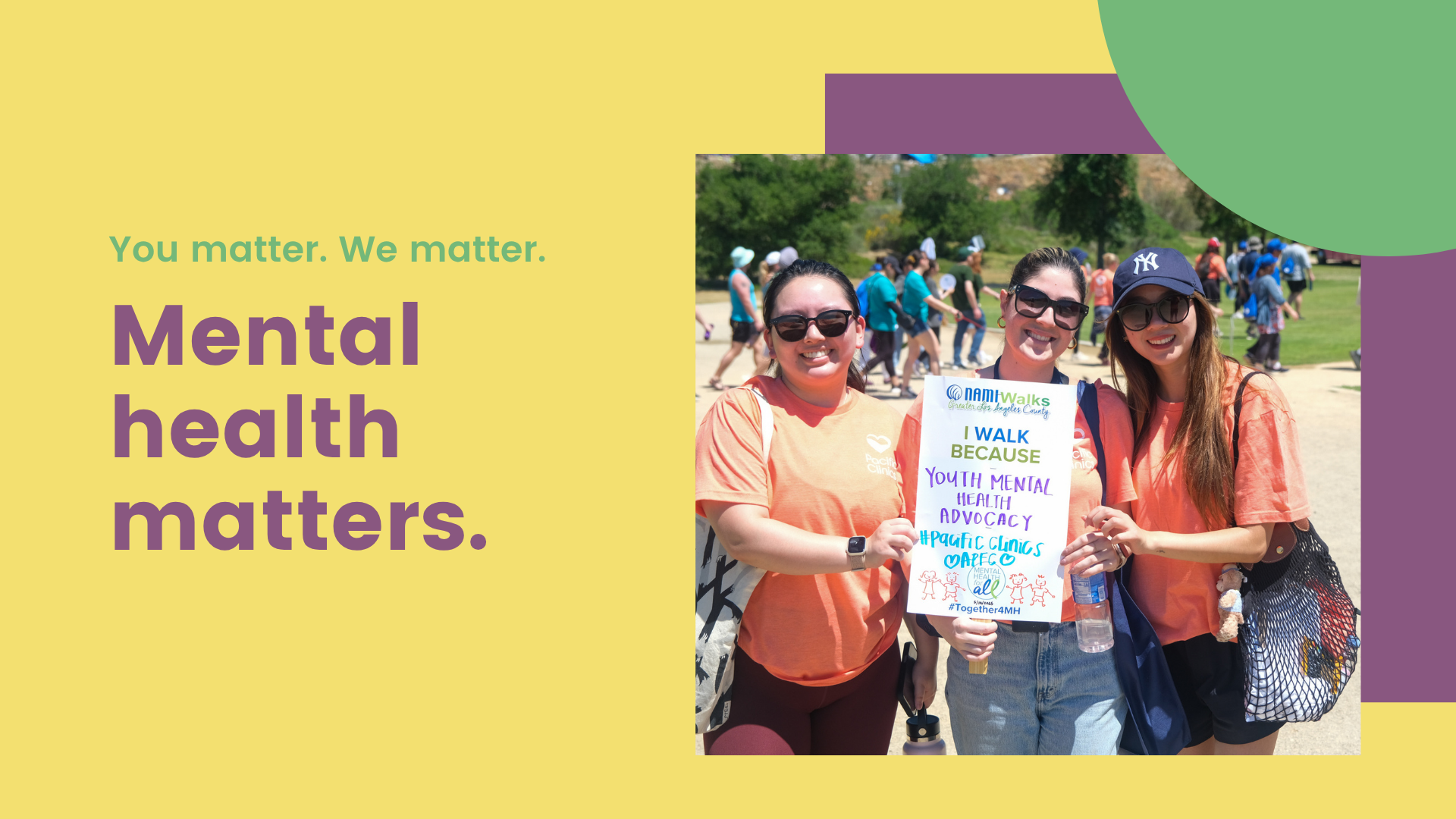On January 1, 2022, we launched two CalAIM programs: Enhanced Care Management (ECM) and Community Supports (CS)

Led by California’s Department of Health Care Services, California Advancing and Innovating Medi-Cal (CalAIM) is a bold, five-year initiative to transform the Medi-Cal program and integrate care seamlessly across delivery systems, programs, and payment structures.
This initiative requires a multi-level paradigm shift in how the state, counties, health plans, and healthcare providers deliver integrated whole-person care approaches to address the behavioral health, addiction treatment, and primary care needs of complex populations. Such services include non-medical services that target social determinants of health (e.g. risks related to economic stability, education, housing, health and healthcare, neighborhood and environment, and community) to reduce health disparities and inequities.
The goals of CalAIM are to:
- Make services more standardized and more equitable across the state, bringing consistency to the current patchwork of programs that vary by county.
- Improve access to care by proactively outreaching to individuals with complex needs and offering a “no wrong door” approach to those seeking care
- Expand services to include Medi-Cal reimbursable non-medical services to address social determinants of health (e.g. housing supports, medically tailored meals)
- Improve patient outcomes and reduce health disparities by focusing on matching patients to the right services at the right time, implementing value-based payment reforms, and increasing accountability
A particular focus of CalAIM is improving care for Medi-Cal enrollees with complex needs, such as: individuals experiencing homelessness, children with complex medical conditions, justice-involved populations, seniors, and youth in foster care.
Enhanced Care Management (ECM) and Community Supports (CS)
The Enhanced Care Management (ECM) and Community Supports (CS) programs are part of our New Business region, headed by Executive Director Jacquelyn Torres. The nine counties initially included in the program launch are: Alameda, Contra Costa, Los Angeles, Kings, Placer, Sacramento, San Francisco, Santa Clara, and Tulare.
What is Enhanced Care Management?
The goal of ECM is to coordinate all primary, acute, behavioral, developmental, oral, social needs, and long-term services and supports for Medi-Cal members with multiple complex needs. Today, Medi-Cal is highly fragmented, with some enrollees needing to access care paid for by six or more delivery systems, which can make it difficult for people to navigate across providers and services.
For example, a person living with agoraphobia who is unable to leave their home but needs dental care, medical care, and mental health care would need to seek authorization for home-based care from three organizations. In response, a new ECM benefit would provide a high-touch lead care manager (called System Navigators at Uplift Family Services) to ensure that enrollees with complex needs are identified and engaged by someone who understands their goals, develops a care plan in partnership with them and their providers, and actively connects them with the clinical and nonclinical services and resources that help them meet those goals while addressing other social determinants of health.
What is Community Supports?
Community Supports is intended to be complementary to ECM, with the goal of providing medically appropriate, cost-effective alternatives to traditionally covered Medi-Cal services to avoid health complications that require higher levels of care.
For example, a person experiencing homelessness who is diagnosed with cancer may not be able to tolerate chemotherapy if they don’t have a safe place to stay, rest, and recover from treatment. Traditionally, Medi-Cal has not covered that safe place to recuperate, instead only covering a nursing home or hospital, which is more than what is needed. In response, CS gives managed care plans the option to substitute 14 types of housing, short-term recovery, and independent living supports for traditionally covered services. Upon launch, we will be primarily focusing on Housing Navigation and Sustaining Services and Housing Tenancy.
Did You Know?
- CalAIM is the first official program that expands our reach statewide
- ECM and CS expand upon and replace the pilot Health Homes Program, which has been in operation in the Bay Region since January 2020
- Our ECM and CS team serves all ages from birth to older adults to provide needed whole person care services to our most vulnerable populations
- Currently we are working with three different Medi-Cal managed care plans to administer ECM and CS benefits
by Karen Guan and Rachelle Grant
News from the Bay internal newsletter
Adapted for external release








